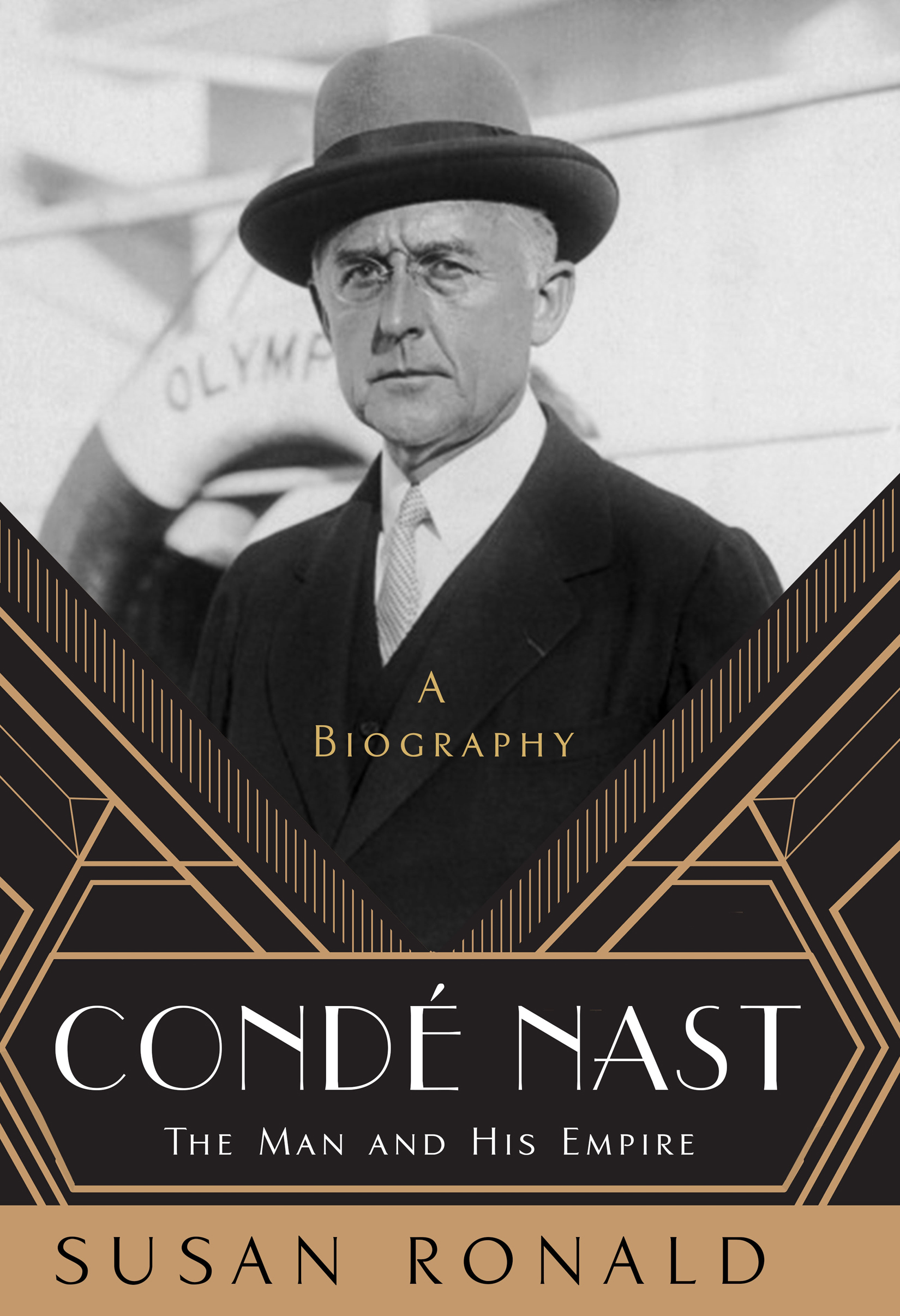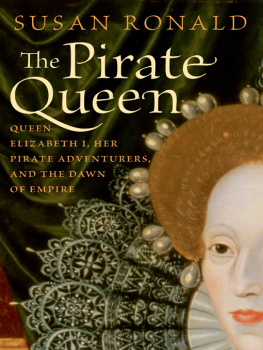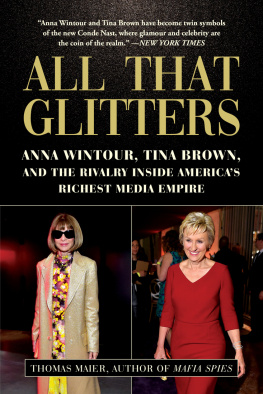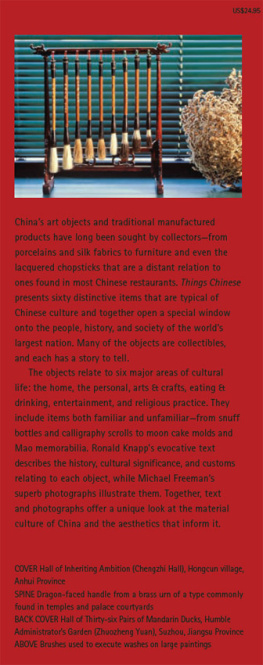Susan Ronald - Condé Nast - The man and his empire
Here you can read online Susan Ronald - Condé Nast - The man and his empire full text of the book (entire story) in english for free. Download pdf and epub, get meaning, cover and reviews about this ebook. year: 2019, publisher: St. Martin’s Press, genre: Detective and thriller. Description of the work, (preface) as well as reviews are available. Best literature library LitArk.com created for fans of good reading and offers a wide selection of genres:
Romance novel
Science fiction
Adventure
Detective
Science
History
Home and family
Prose
Art
Politics
Computer
Non-fiction
Religion
Business
Children
Humor
Choose a favorite category and find really read worthwhile books. Enjoy immersion in the world of imagination, feel the emotions of the characters or learn something new for yourself, make an fascinating discovery.

- Book:Condé Nast - The man and his empire
- Author:
- Publisher:St. Martin’s Press
- Genre:
- Year:2019
- Rating:3 / 5
- Favourites:Add to favourites
- Your mark:
- 60
- 1
- 2
- 3
- 4
- 5
Condé Nast - The man and his empire: summary, description and annotation
We offer to read an annotation, description, summary or preface (depends on what the author of the book "Condé Nast - The man and his empire" wrote himself). If you haven't found the necessary information about the book — write in the comments, we will try to find it.
Condé Nast - The man and his empire — read online for free the complete book (whole text) full work
Below is the text of the book, divided by pages. System saving the place of the last page read, allows you to conveniently read the book "Condé Nast - The man and his empire" online for free, without having to search again every time where you left off. Put a bookmark, and you can go to the page where you finished reading at any time.
Font size:
Interval:
Bookmark:


The author and publisher have provided this ebook to you for your personal use only. You may not make this ebook publicly available in any way. Copyright infringement is against the law. If you believe the copy of this ebook you are reading infringes on the authors copyright, please notify the publisher at:
us.macmillanusa.com/piracy .
In memory of Stephen F. Bashford one of the really good guys. Gone too soon.
As Cond Nast ran a truly international business, some correspondenceparticularly with his British counterpartsappears in British English in the book. For example, I have used the British edition of Always in Vogue by Edna Woolman Chase as a primary source book, so all quotations from it will be spelled in British English. I have not changed any British spelling, punctuation, or expressions into American English but have provided a translation by way of a footnote only if I believed one was required. Similarly, there are a number of spelling errors and abbreviations in some letters, which I have not corrected other than to add letters or words [in brackets] or as a footnote for ease of understanding. Letters by Michel de Brunhoff are written in English and have the Frenchmans grammatical errors intact. To handle this any other way, in my opinion, would detract from the flow of the letters with a ubiquitous use of [sic], while adding nothing to the context and, for many, possibly diminishing their enjoyment of those Ive included. I also refer to what we call World War I as the Great War, in the parlance of the day, until its sequelWorld War IImade it possible to add a number this most devastating of conflicts. Many of the French expressions used have been incorporated into English, but for those that havent, I provide a translation on the same page. The various dances mentioned in the book are called by their proper names, but to find out how they can be told apart, or indeed how to dance them, you will need to consult old films available online.
C ond Nast might have wondered why a publisher should feel like the ringmaster of a circus that would put Ringling Brothers and Barnum & Baileys to shame. True, he aimed to create the most excellent and stunning greatest show, albeit in the publishing world. Did that mean he was expected to tame and shackle his employees to prevent them from behaving like wild animals? He would have been discomfited by the image racing through his mind. He was a quiet, reflective sort of chap, never garrulous or given to outbursts of bad temper.
Though middle aged, the forty-six-year-old Nast was still deemed handsome, with his even features, slim physique, and perfect posture. Some thought he was a bit bankerish with his wire-rimmed pince-nez, slightly receding hairline, and immaculately tailored three-piece suits. He was noted for his measured, gentlemanly manner, his numeracy, and his careful management style. Those who didnt know him well thought he was standoffish. Others were floored by his incredible eye for detail. Above all, Cond was painfully shy and always mindful of his coveted place in New York high society. But a ringmaster? Never.
Of course he wanted the best in every fieldillustrators, photographers, designers, writers, editors, layout people, and even advertisers. How else could he craft the best publications? Why, even his dear friend and editor in chief at Vanity Fair, Frank Crowninshieldeveryones favorite raconteurwas guilty of high jinks, not to mention of poaching top talent from Conds cash cow, the highly successful Vogue.
As far back as the spring of 1915, Edna Woolman Chase, Conds editor in chief at Vogue, complained that Frank had his eye on a small dark-haired pixie, treacle-sweet of tongue but vinegar-witted who was working on captions and special features. One of her first pieces was about houses, Cond recalled, and was cleverly titled Interior Desecration. It made a fair few avant-garde interior designers turn away in shame. This woman was courageous, too. She even dared to become a lab rat for her feature article Life on a Permanent Wavewhen perms were still hazardous and took an entire day hooked up to heated electric rods after the hair was soaked in a reagent (usually cow urine and water or caustic soda) to show results. The pixies name was Dorothy Rothschild. Within the year she became Dorothy Parker.
Cond had to smile at the memory. Of course Dorothy was too witty to remain the writer of special features and punchy one-liners like From these foundations of the autumn wardrobe, one may learn that brevity is the soul of lingerie. At times she borrowed from nursery rhymes, as when she hoped to tweak the noses of Vogue readers: There was a little girl who had a little curl, right in the middle of her forehead. When she was good she was very very good, and when she was bad she wore this divine nightdress of rose-colored mousseline de soie, trimmed with frothy Valenciennes lace. The suggestion that Vogue readers might actually have sex was anathema to the Palm Beach and Newport sets, and the offending quip was deleted at the proof stage.
Although Vanity Fairs editor, Frank Crowninshield (called Crownie by his staff and close friends), was the quintessential Edwardian gentleman, he was the first to truly admire Dorothys way with words. So he duly poached the quiet, little, seemingly unassuming lass from Vogue. What else could he do? He adored her humor, and in 1915, together with George Shepard Chappell, the three of them wrote High Society: Advice as to Social Campaigning and Hints on the Management of Dowagers, Dinners, Debutantes, Dances and the Thousand and One Diversions of Persons of Quality. Their entertaining jests were illustrated by the pen-and-ink drawings of Anne Harriet Fish, the internationally famous artist for The Tatler and Vanity Fair in London. Born in Bristol, England, Fish, as she was known to every witty household, was adored on both sides of the Atlantic. Still, she wasnt the problem in managing his circus, Cond ruminated.
On her own perhaps Dorothy hadnt been at fault? Then Cond thought back to his private assistant, Albert Lee, and his daily, almost religious, tracking of the Allied forces in the Great War on a huge map of France taped to the office wall. Lee painstakingly set the battle lines, as reported daily in The New York Times, in colored pins back and forth across no-mans-land. (Just how he charted the infinitesimal movements by the yard, meter, or foot is anyones guess.) Being an inveterate biter of the hand that tossed her tasty morsels to write about, Dorothy taunted the poor man by dashing into Vogues offices early in the morning and devotedly rearranging Lees weary armies. While Lee eventually suspected that German spies had invaded Vogue, Frank pounced like any decent predator, and enticed Dorothy to soar under his wing, proclaiming, Her perceptions were so sure, her judgment so unerring, that she always seemed to hit the centre of the mark.
The fact was that Frank, too, adored practical jokes. An archplayer of many pranks, he had rather notoriouslyand repeatedlytied black thread to the legs of chairs in the guest bedrooms of country mansions where he was staying, then slipped the end of the thread out the bedroom door. When its occupant prepared for bed, the chairs would suddenly move, causing its mystified resident to either swear off alcohol or believe that the house was haunted.
Font size:
Interval:
Bookmark:
Similar books «Condé Nast - The man and his empire»
Look at similar books to Condé Nast - The man and his empire. We have selected literature similar in name and meaning in the hope of providing readers with more options to find new, interesting, not yet read works.
Discussion, reviews of the book Condé Nast - The man and his empire and just readers' own opinions. Leave your comments, write what you think about the work, its meaning or the main characters. Specify what exactly you liked and what you didn't like, and why you think so.









